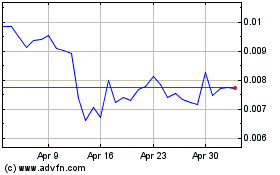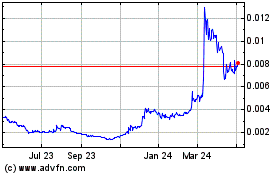Bitcoin Bottoms: The Psychology Of Bear Markets
October 20 2022 - 1:00PM
NEWSBTC
The chase for the bitcoin bottom is still on since the digital
asset fell below its $20,000 price level. Given that the bear
market has not been long in the making, it stands to reason that
the bull market isn’t here just yet. However, being able to
pinpoint when the cryptocurrency has reached as low as it will go
can help make smart investment choices and the previous bear trends
can shine a light to how it might play out. Previous Bitcoin Bear
Markets The most recent bitcoin bear markets point towards some
important trends that may occur before a bitcoin bottom is
established. The 2018 bear market and 2014 bear runs helped to
shine a light on what to keep an eye on as the crypto winter rages
on. Related Reading: Aptos (APT) Ranges Just Above $8, Is It Time
To Dump Those Airdrop Tokens? One of the very first things to look
at is how long the previous bear markets had actually lasted. In
the last two bears, it seems that the amount of days that passes
before the market bottoms out is getting lower. 2014 saw a total of
407 days before a bitcoin bottom was established, while it was only
364 days in the 2018 bear market. Given this, it is possible to
expect that the duration before the market bottom might be lower
this time around but it also shows that the market is likely not
there yet. BTC bear market trends | Source: Arcane Research
To hit such figures, the market would need to reach December, which
is likely when bitcoin would begin to reach its bottom. If history
repeats itself, then what would follow would be a stretched-out
period of unusually low volatility, which is when investors are
presented with the best opportunity to purchase coins. Another
thing is the performance of the on-chain indicators as they are
usually low around when bitcoin reaches its bottom. As reported by
Bitcoinist, these on-chain metrics hit a long-term bottom, which
could help point towards a bottom, or at least an approach to a
bottom. The same was the case during the previous bear markets and
the current levels align with those same levels. BTC trending at
$19,200 | Source: BTCUSD on TradingView.com Low volatility in
bitcoin also points toward this. For example, back in 2014, the low
volatility range lasted for 280 days, while 2018’s lasted for 130
days. It also follows the trend of a decline in the number of days
required to reach a bottom. The current BTC low volatility has now
lasted for around 121 days. Related Reading: Bitcoin Correlation
With Macro Remains Strong, Despite Stability Now, these metrics is
not an exact science since they are not the only factors that go
into determining the end of a bear and the beginning of a bull
market. The most important thing is perhaps the most unpredictable
one, which is human sentiment. In the end, bitcoin’s price will
respond to the supply and demand balance in the market.
Featured image from Analytics Insight, charts from Arcane Research
and TradingView.com Follow Best Owie on Twitter for market
insights, updates, and the occasional funny tweet…
Amp (COIN:AMPUSD)
Historical Stock Chart
From Mar 2024 to Apr 2024

Amp (COIN:AMPUSD)
Historical Stock Chart
From Apr 2023 to Apr 2024

Real-Time news about Amp (Cryptocurrency): 0 recent articles
More Amp News Articles